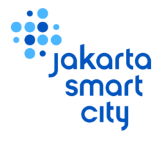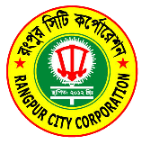A private, wireless network that
uses the 5G cellular
standard but is restricted to a specific group of users or devices, rather than being publicly
accessible. Organisations such as businesses, universities, and government agencies set up private
5G networks to enable highly-reliable, secure and dedicated communications for their operations.
Exemplary Applications of Private 5G
Networks:
Industrial automation
5G can support the high-speed,
low-latency communication required
for industrial automation and control systems.
Smart manufacturing
Private 5G networks can enable
machine-to-machine communication
for real-time monitoring and control of production processes.
Healthcare
Private 5G networks can support the
high-bandwidth, low-latency
communication required for telemedicine and remote surgery.
Transportation
Private 5G networks can support the
high-speed, low-latency
communication required for autonomous vehicles and other transportation
applications.
Public safety
Private 5G networks can provide secure,
reliable communication for
public safety agencies, including first responders and emergency services.
Smart Cities
Private 5G networks can support the
high-speed, low-latency
communication required for smart cities, including traffic control, public
transportation and other urban services.
Benefits of using a private 5G network:
Increased
security
Private networks can be
secured and
managed by the organisation, reducing the risk of unauthorized access or data
breaches.
Reliability
Private networks can be
designed and
managed to meet the specific needs of the organisation, ensuring that critical
applications and services are always available.
Lower
latency
Private networks can be
optimised
for low latency, which is important for real-time applications such as remote
surgery, autonomous vehicles and industrial automation.
Customization
Private networks can be
customised
according to the specific needs of the organisation, allowing for more
flexibility and better performance.
Cost
savings
Private networks can be
more
cost-effective than public networks, especially when it comes to supporting
large numbers of devices and applications.
Digital innovation and tools to
equip ports with capabilities
to optimise terminal operations, manage safety and security, and support sustainability goals.
Unmanned
Aerial Vehicles (Drones)
- Environmental monitoring of air pollutants in ports as required by Port
& City authorities.
- Additional surveillance of oil-slicks and debris in the water.
- Assistance in docking container ships by autonomous drone, and
anticipation of handling operations.
Smart
Surveillance and Safety
- Unmanned drones patrolling yard area to detect security breach.
- Automatic detection of non-compliance to SOPs (e.g. not wearing PPE).
- License plate recognition for quick detection of vehicles moving in and
out of facility.
Autonomous/Remote Operated
Machinery
- Automated/remote controlled rubber tyred gantries or quay cranes for
container handling, powered by high quality video streaming and sensor
data.
- Improved communication of AGVs via 5G, offering wider coverage and
reduced interference.
Augemented
Reality (AR) / Virtual
Reality (VR) Operations and Training
- AR collaboration allows remote experts to have accurate view of live
situations without travelling on-site.
- Automation of SOPs for maintenance and inspection, and improved
experience for employee onboarding and technical trainings.
Conditional
Monitoring
- Massive use of sensors to detect movement of equipment, assets and
containers, and to provide real time visibility on operational movement
across yard.
Digital technologies and
applications to address efficiency,
security and safety and sustainability needs in the O&G sector.
Smart
Surveillance and Safety
- Proactive monitoring of critical zones, supported by video analytics and
thermal imaging for automatic detection of oil leakages and other
hazardous events within facility.
- Automated monitoring of safety compliances including wearing of safety
gears, PPE etc.
Augmented
Reality (AR) / Virtual
Reality (VR) Operations and Training
- VR training for dangerous situations can test safety and compliance
protocols and improve procedural execution in the event of an emergency
safety incident.
- AR overlays (e.g. smart glass hardware, analytics, back-office tools) in
the oil & gas industry can help improve worker safety and effectiveness
by providing visual clues and indicators, process steps, and repair and
operation instructions.
Remote
Monitoring and Predictive
Maintenance
- Massive sensor network allows operators to remotely monitor and control
various aspects of the platform, such as production levels and equipment
status.
- Unmanned drones inspect equipment/assets at hard-to-reach areas and
detect maintenance works required, reducing downtime and turnaround time
to carry out fixes.
Connected
Workforce
- Real-time location tracking for supervisors to always keep track of
employee location within platform, and ensure safety.
- Collaboration and mission critical communication including proactive
emergency response.
Digital
Twins
- Creating virtual models of the platform can help operators simulate and
optimise its operations.
Solutions to support customer
experience improvement and drive operational efficiency at airports.
Smart
Surveillance and Safety
- AI surveillance to detect security breaches in restricted areas,
abandoned baggage, suspicious behaviour etc.
- Proactive monitoring of airport grounds – including common areas,
aircraft traffic taxiways, runways and aprons - to detect overcrowding
and manage traffic flow.
Augmented
Reality (AR) / Virtual
Reality (VR) Operations and Training
- Facial recognition capabilities with automated gates at various
checkpoints.
- Self check-ins with automated baggage drop.
- Automatic Number Plate Recognition (ANPR) for quick and seamless paring
experience.
Real Time &
Integrated
Communications
- Fast and reliable communications between ground handlers, aircraft team
and Operations Centre for improved operational efficiency and reduced
delays.
Massive Data
Upload & Download
- Quick and reliable upload transfer of in-flight telematics data to
control centre, and download of in-flight entertainment.
Technology solutions focused on
optimisation of traditional
manufacturing procedures, driving supply chain efficiency and enabling factory transformation.
Augmented
Reality (AR) and Virtual
Reality (VR) Solutions
- VR training and digital Out of Control Action Plan (OCAP) to handle
unexpected situations during production process.
- AR overlays (e.g. smart glass hardware, analytics, back-office tools) to
improve turnaround time in repair works and maintenance of equipment and
machineries.
Smart
Surveillance and Safety
- AI surveillance to detect security breaches in restricted areas such as
warehouses with high value goods.
- Proactive monitoring of compliance to safety, mitigating workplace
hazards within the factory.
Predictive
Maintenance
- Conditional monitoring of vibrations, temperature changes and other
relevant parameters of machines and equipment.
- Real-time tracking and dashboard view of equipment health and efficiency
to minimise production downtime.
AI Based
Operations
- Object recognition for quality inspection in areas including object
orientation, defects and more.
- Identification of anomalies in production throughput and productivity,
used as an indicator of machine health and a prediction of potential
downtime.


